Ultrasound of the ulnar-palmar region of the wrist: normal anatomy and anatomic variations
- PMID: 32385814
- PMCID: PMC7441134
- DOI: 10.1007/s40477-020-00468-5
Ultrasound of the ulnar-palmar region of the wrist: normal anatomy and anatomic variations
Abstract
Ultrasound (US) assessment of the wrist is frequently used for the evaluation of carpal tunnel due to high frequency of local compression of the median nerve (MN), but the ulnar-palmar wrist region (UPWR) has received limited attention in the medical literature. The possibilities of US in the assessment of UPWR are therefore likely underestimated by sonologists. This review article is focused on the US assessment of the normal anatomy and anatomic variations of the UPWR. The anatomy of this region of the wrist is complex and less studied than the radial side. In an effort to simplify it and to present it didactically, we have divided this region in three parts on the basis of osseous landmarks. Our review indicates sonography is effective in identifying the UPWR and related disorders, and is thus a valuable tool for ensuring appropriate management of a variety of disorders.
Keywords: Guyon’s canal; Palmar carpal ligament; Transverse carpal ligament; Ulnar artery; Ulnar nerve.
Conflict of interest statement
The authors declare that they have no conflict of interest.
Figures
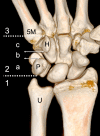










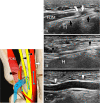



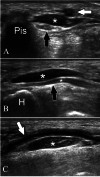


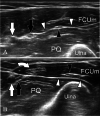


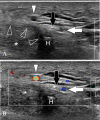
References
-
- Guyon F. Note sur une disposition anatomique propre à la face antérieure de la région du poignet et non encore décrite. Bulletin de la Societé anatomique, Paris. 1861;6:184–186.
-
- Grechenig W, Clement H, Egner S, Tesch NP, Weiglein A, Peicha G. Musculo-tendinous junction of the flexor carpi ulnaris muscle. An anatomical study. Surg Radiol Anat. 2000;22(5–6):255–260. - PubMed
-
- Bianchi S, Martinoli C. Ultrasound of the musculoskeletal system. Berlin: Springer; 2007. Forearm; pp. 409–423.
Publication types
MeSH terms
LinkOut - more resources
Full Text Sources

